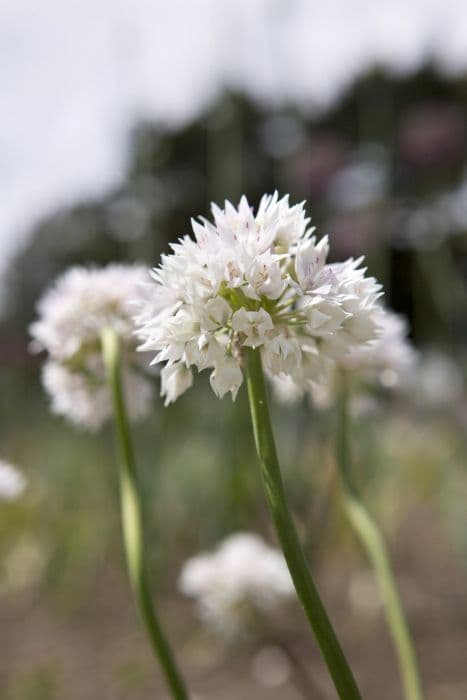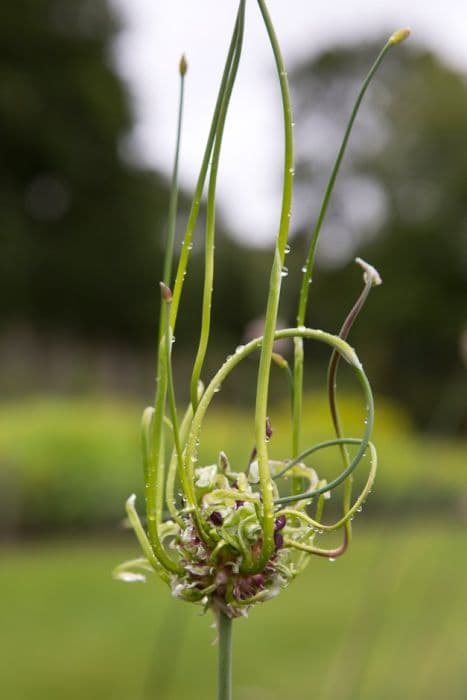Oneleaf Onion Allium unifolium
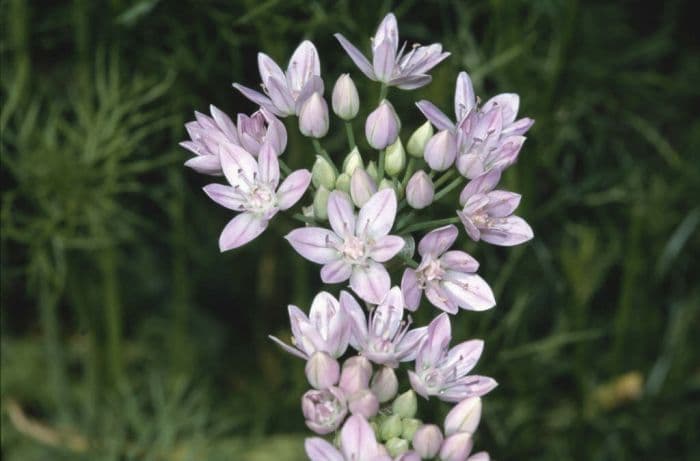
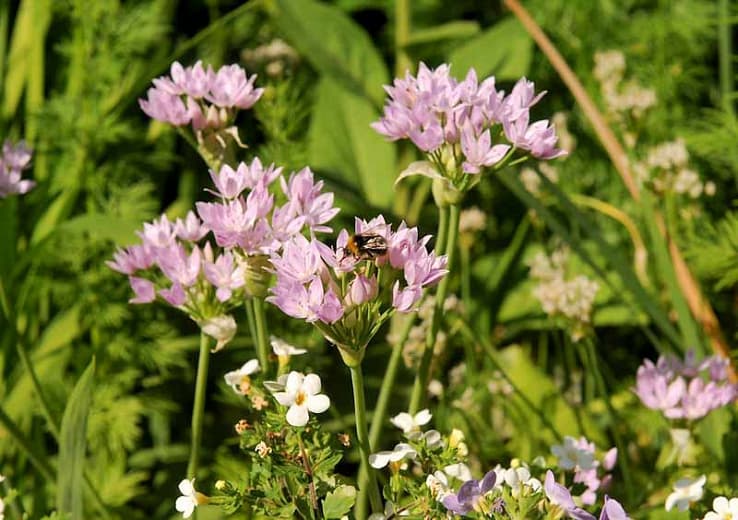

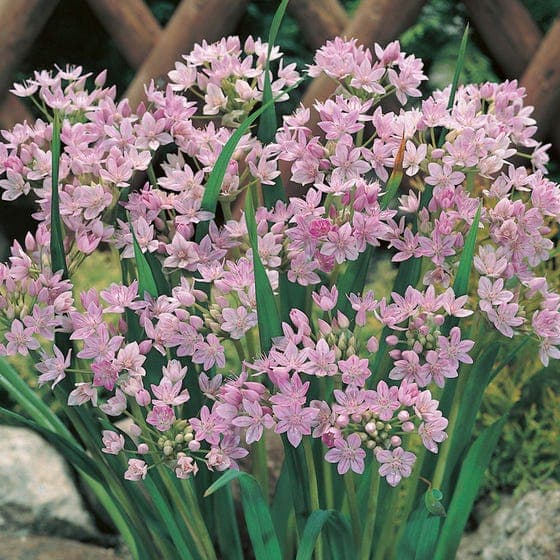
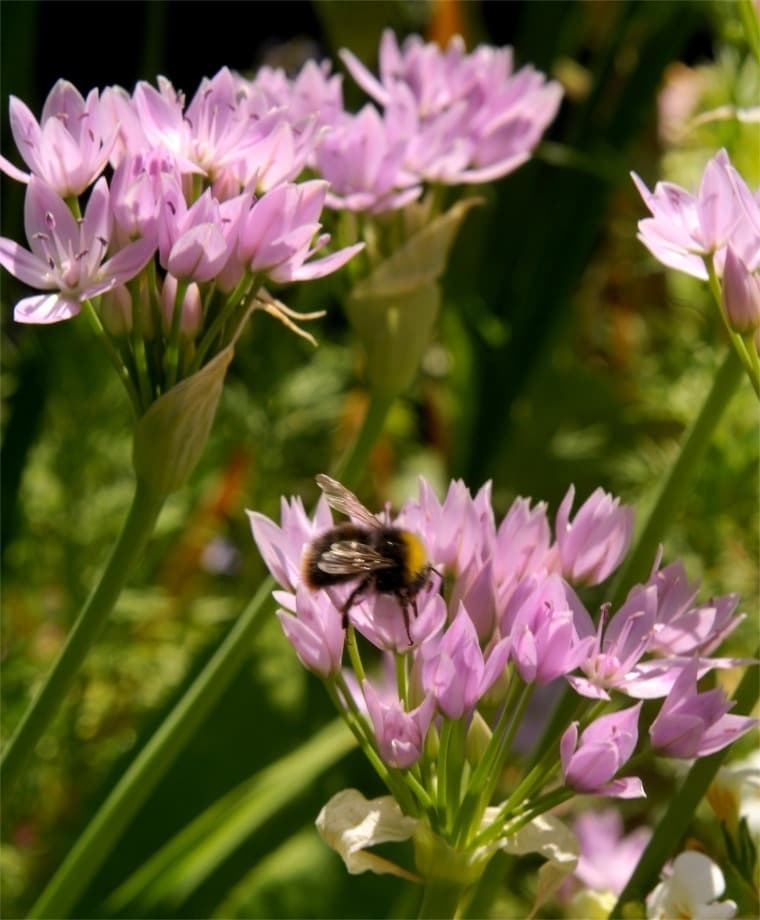
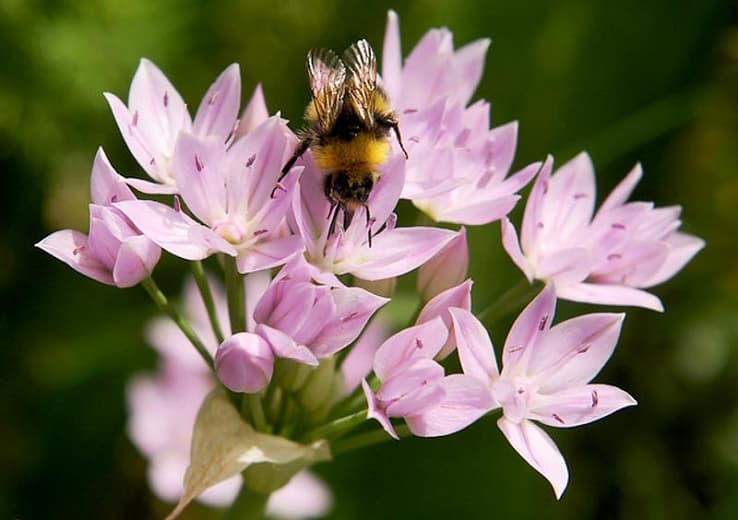
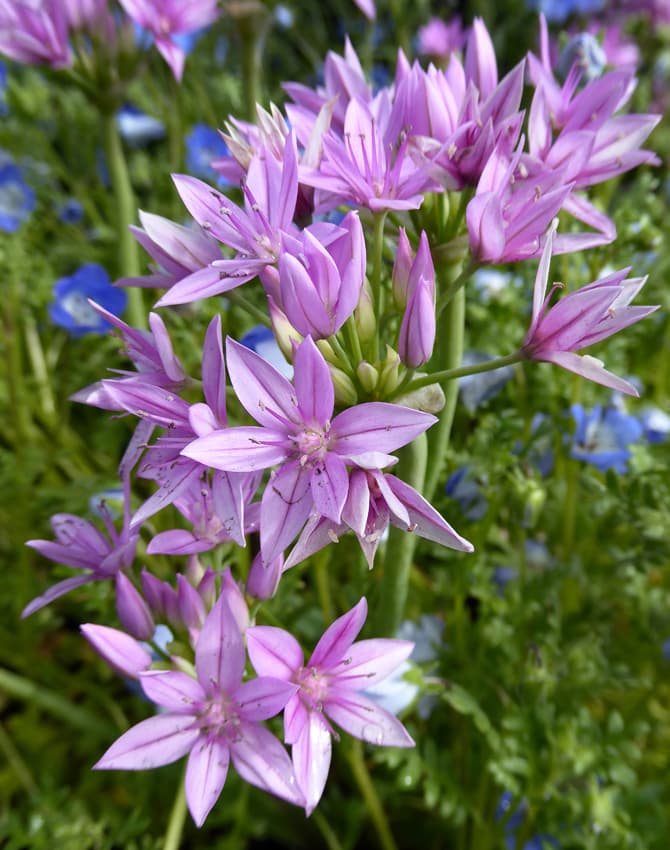
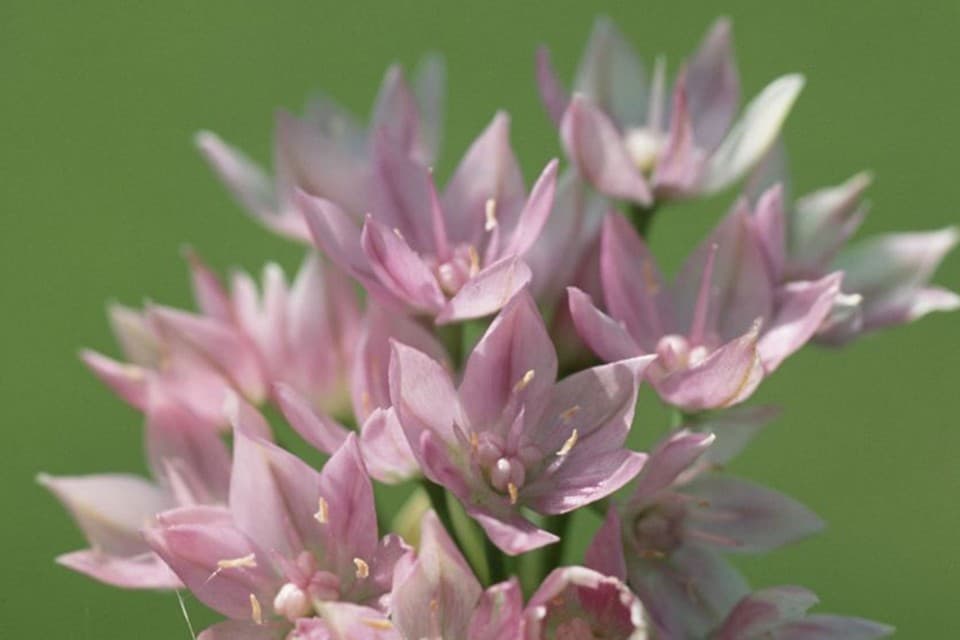
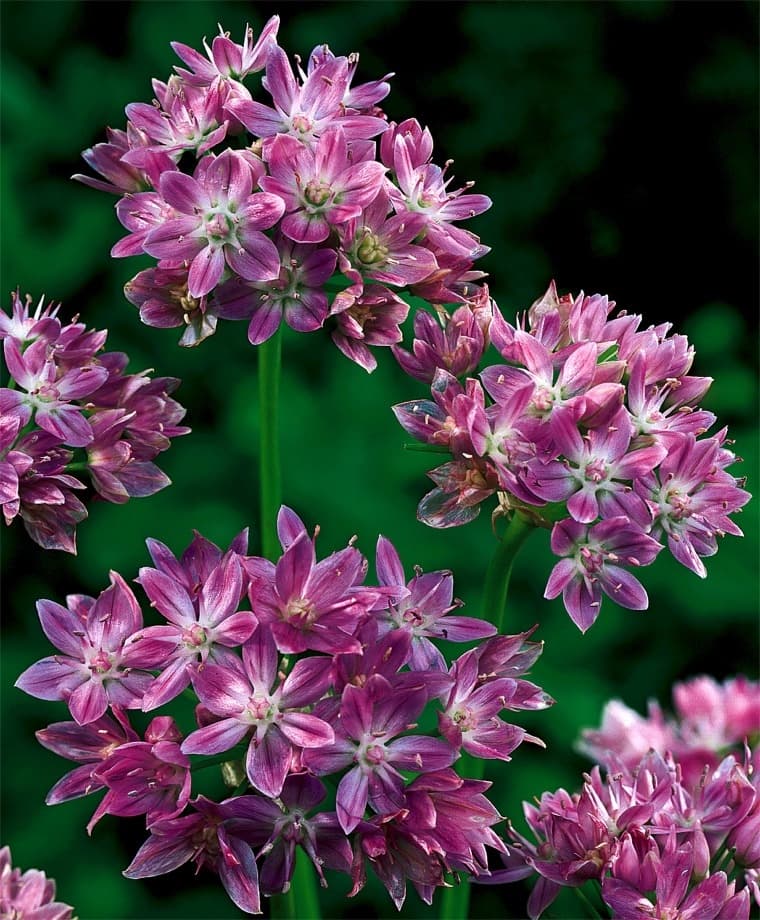
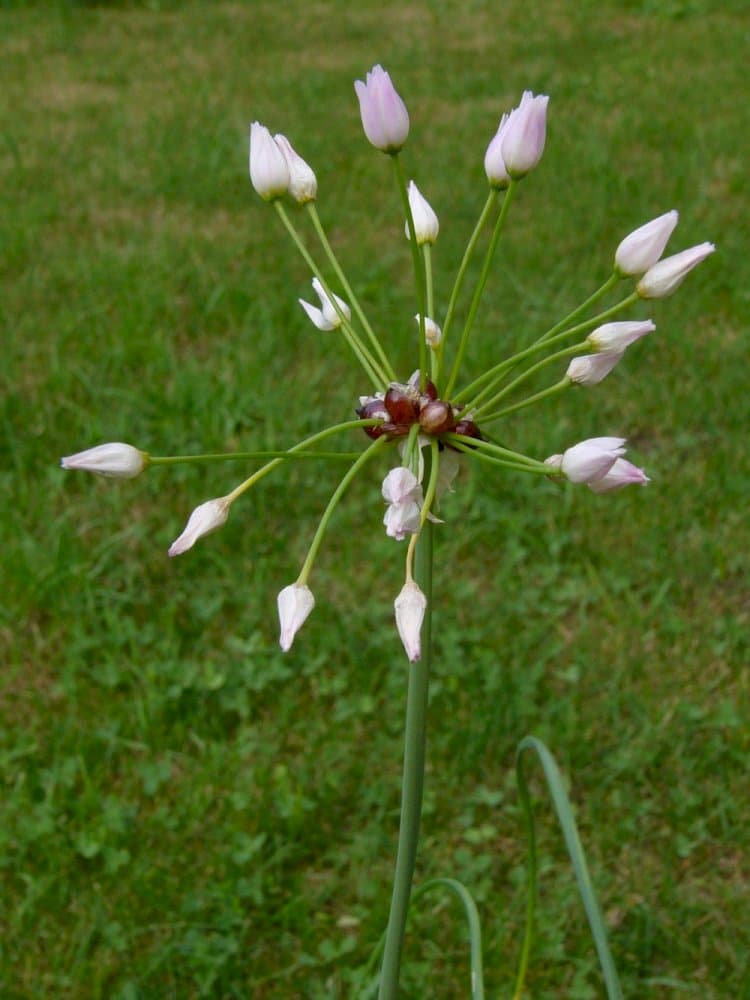
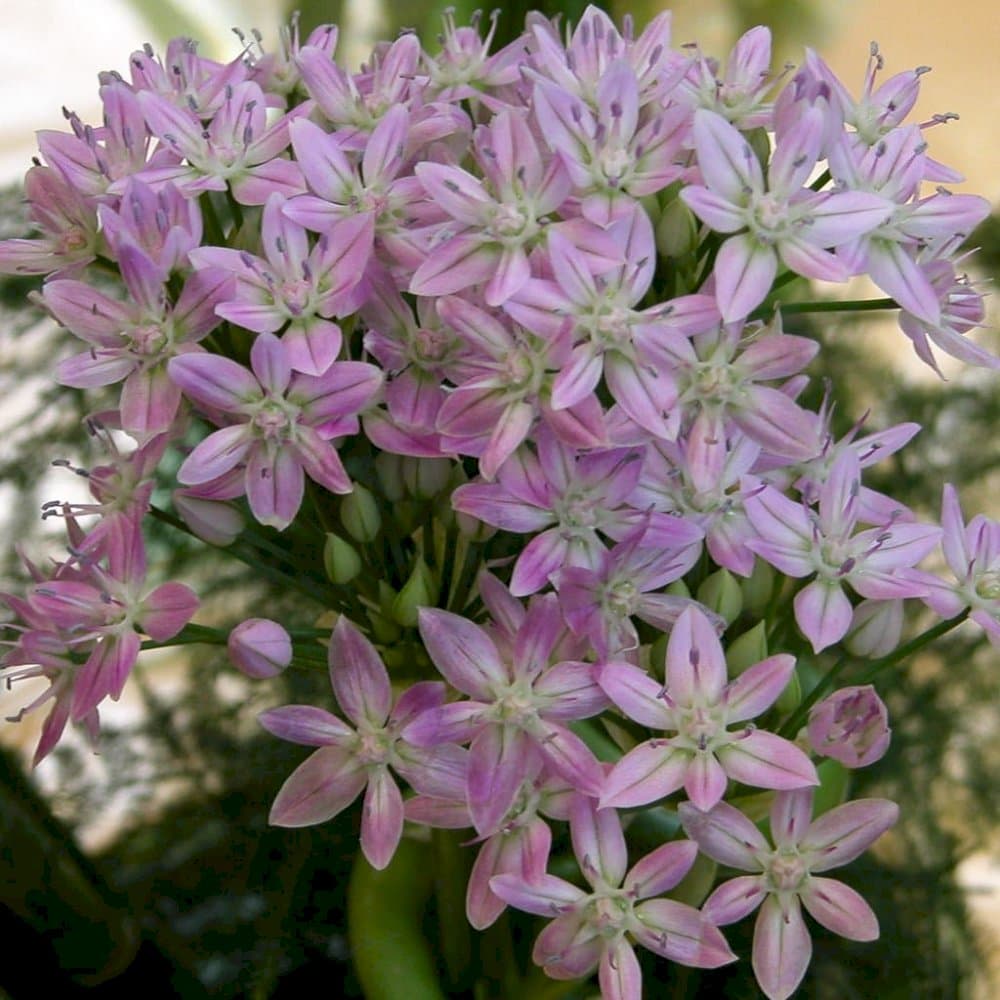
ABOUT
Allium unifolium, commonly known as the one-leaf onion, is a charming flowering plant notable for its alluring blooms and foliage. The plant typically showcases a basal rosette of slender, strap-shaped leaves that are graceful in appearance. The leaves are smooth and an inviting green, providing a lush look at the base of the stem. The most striking feature of the one-leaf onion is its flowers. They comprise clusters called umbels, which bear numerous small, star-shaped flowers. These blossoms are a delightful shade of pink, sometimes verging on lavender, adding a soft splash of color to gardens or wildflower meadows. Each individual flower is made up of six tepals, which are petal-like structures that radiate from the center of the bloom, giving it a delicate, almost ethereal look. The plant sends up an erect flower stalk, which is sturdy and rises above the foliage, and culminates in the attractive umbel of flowers. The stalk itself is typically green, blending seamlessly with the rest of the plant. The overall impression of the one-leaf onion is of a graceful, upright plant with a pleasing, rounded floral display that adds beauty and a sense of wild charm wherever it grows.
About this plant
 Names
NamesFamily
Amaryllidaceae.
Synonyms
One-leaf Onion, American Garlic, Pink Lily Leek.
Common names
Nothoscordum unifolium, Allium unifolium var. unifolium.
 Toxicity
ToxicityTo humans
Allium unifolium, commonly known as Oneleaf onion, is generally not considered toxic to humans. Members of the Allium genus, which includes onions, garlic, and chives, can be eaten by humans; however, excessive consumption may lead to gastrointestinal discomfort, including symptoms like nausea, vomiting, and diarrhea. It is important to note that sensitivity can vary greatly among individuals, and some may suffer from more severe reactions, especially if they have an allergy to this type of plant.
To pets
Oneleaf onion, the common name for Allium unifolium, is toxic to pets, especially cats and dogs. Allium species can cause gastrointestinal irritation and hemolytic anemia if ingested by pets. Symptoms of poisoning may include vomiting, diarrhea, stomach pain, lethargy, and abnormal breathing. If a pet ingests a large amount, it could result in damage to red blood cells, leading to anemia. More severe cases could be life-threatening and require immediate veterinary attention.
 Characteristics
CharacteristicsLife cycle
Perennials
Foliage type
Deciduous
Color of leaves
Green
Flower color
Pink
Height
1-1.5 feet (30-45 cm)
Spread
1 foot (30 cm)
Plant type
Bulb
Hardiness zones
5
Native area
California
Benefits
 General Benefits
General Benefits- Aesthetic Appeal: Allium unifolium, commonly known as One-leaf Onion, produces attractive pinkish-purple flowers that add vibrant color and visual interest to gardens and landscapes.
- Pollinator Attraction: The flowers of the One-leaf Onion are known to attract bees, butterflies, and other beneficial pollinators, which are essential for the pollination of many plants and the health of the ecosystem.
- Low Maintenance: One-leaf Onion is considered easy to care for and does not require extensive maintenance, making it a practical choice for both novice and experienced gardeners.
- Drought Tolerance: Once established, Allium unifolium is drought-resistant, allowing it to thrive in dry conditions and reduce the need for frequent watering.
- Culinary Uses: Although not as commonly used as other alliums like onions and garlic, the One-leaf Onion is edible and can be used in cooking for its mild onion-like flavor.
- Deer Resistance: The plant is typically resistant to deer, which can help protect gardens and landscapes from grazing damage.
- Container Gardening: One-leaf Onion is suitable for container gardening, allowing those with limited space such as balconies or patios to enjoy its beauty.
 Medical Properties
Medical PropertiesThis plant is not used for medical purposes.
 Air-purifying Qualities
Air-purifying QualitiesThis plant is not specifically known for air purifying qualities.
 Other Uses
Other Uses- Allium unifolium, commonly known as the one-leaf onion, can be used to create natural dyes, with the plant's parts providing shades of yellow, green, or brown depending on the mordant used.
- The one-leaf onion may serve as an ornamental feature in rock gardens, offering a delicate aesthetic with its slender stems and attractive flower clusters.
- This plant can be utilized in butterfly gardens, as it attracts pollinators like bees and butterflies with its nectar-rich flowers.
- Due to its distinctive scent, Allium unifolium can be planted as a companion plant to deter herbivores like deer and rabbits from more vulnerable garden plants.
- Its cut flowers are often used in floral arrangements for their unique spherical shape and long vase life, adding a wildflower charm to bouquets.
- One-leaf onion can be part of a natural pest control strategy, repelling certain insects that might otherwise harm closely planted vegetables or flowers.
- Allium unifolium can be planted for soil stabilization on slopes or in areas prone to erosion, thanks to its clump-forming habit and robust root system.
- Seed heads of one-leaf onion, once dried, can be used in craft projects or as part of decorative displays to add textural interest.
- The one-leaf onion, with its tendency to naturalize, can be utilized in meadow planting schemes to create a low-maintenance and wildlife-friendly landscape.
- Photographers and artists may use the striking blossoms of Allium unifolium for their aesthetic appeal in detailed nature studies and botanical illustrations.
Interesting Facts
 Feng Shui
Feng ShuiThe Allium unifolium, also known as the one-leaf onion, is not used in Feng Shui practice.
 Zodiac Sign Compitability
Zodiac Sign CompitabilityThe one-leaf onion is not used in astrology practice.
 Plant Symbolism
Plant Symbolism- Persistence: Allium unifolium, commonly known as the One-Leaf Onion, is a perennial that returns year after year, symbolizing durability and the ability to endure over time.
- Unity: Its scientific name 'unifolium' suggests a theme of unity or oneness, which can signify individuals coming together as a single entity in harmony.
- Patience: The plant grows slowly and blooms in spring, representing the virtue of patience and the anticipation of rewards for those who wait.
- Humility: Despite being related to onions, a staple food, its unassuming presence in meadows and fields can be seen as a symbol of modesty and grounding.
- Protection: Alliums are known for their strong scent, which is believed to repel pests and as such, they are often thought to symbolize protection.
- Prosperity: The robust nature of alliums, including the One-Leaf Onion, can be seen as a metaphor for growth and burgeoning success, often associated with prosperity.
 Water
WaterThe One-leaf Onion should be watered moderately, ensuring the soil is moist but not waterlogged. During active growth in spring and early summer, water it once a week with around 1 gallon of water per square yard of soil. If you're growing it in a pot, water until you see excess water draining from the bottom. Cut back on watering as the flowers fade and the foliage begins to die back, as the bulbs enter a dormant state. During this dormant period, water sparingly, just enough to keep the soil from completely drying out, roughly every two to three weeks depending on the climate.
 Light
LightThe One-leaf Onion thrives in full sun to partial shade. It's best to find a spot where the plant can receive at least six hours of direct sunlight per day. However, in hotter climates, some light afternoon shade can be beneficial to prevent scorching. Planting near a south-facing wall or fence will ensure ample sunlight exposure while still providing some protection during the hottest part of the day.
 Temperature
TemperatureThe One-leaf Onion prefers a temperate climate and can tolerate a temperature range from 20°F to 80°F. It's hardy to USDA zones 5 through 9, enduring winter lows and flourishing in spring and early summer warmth. The ideal growing temperatures for this plant are between 50°F and 75°F, which encourages healthy growth and blooming.
 Pruning
PruningPruning the One-leaf Onion is primarily about deadheading spent flowers to maintain a neat appearance and prevent self-sowing if desired. Cut the flower stems back to the base after blooming. In late summer or fall, once the leaves have yellowed and died back, you can trim away the old foliage. Pruning is typically done once a year, after flowering and when the foliage starts to decline.
 Cleaning
CleaningAs needed
 Soil
SoilThe One-leaf Onion prefers well-drained soil with a high percentage of organic matter. A soil mix with equal parts loam, sand, and compost is ideal. The soil pH should be slightly acidic to neutral, around 6.5 to 7.0.
 Repotting
RepottingOne-leaf Onions typically do not require frequent repotting; it can be done every 3-4 years or when the bulbs become crowded, generally in the late summer after foliage has died back.
 Humidity & Misting
Humidity & MistingOne-leaf Onion thrives in moderate humidity conditions; it does not require any special humidity adjustments when grown in its preferred outdoor setting.
 Suitable locations
Suitable locationsIndoor
Place in bright indirect light and ensure good ventilation.
Outdoor
Plant in full sun with well-drained soil.
Hardiness zone
5-9 USDA
 Life cycle
Life cycleAllium unifolium, commonly known as the One-Leaf Onion, begins its life cycle as a dormant bulb that germinates and emerges in late winter or early spring. The plant produces a single, long, narrow leaf and a stem that bears an umbel of attractive pink to rose-colored flowers. After flowering in late spring or early summer, the plant sets seed, which then disperses by wind or animal activity, enabling the continuation of the species. Post flowering, the above-ground foliage of the One-Leaf Onion dies back and the plant goes into a period of dormancy during the hot summer months. Throughout dormancy, the underground bulb survives by utilizing stored nutrients. The cycle resumes the following spring when environmental conditions become favorable, and the bulb sends up new growth, thus repeating the life cycle.
 Propogation
PropogationPropogation time
Spring to Summer
The most popular method of propagation for Allium unifolium, commonly known as the One-leaf Onion, is by dividing its bulbs. The best time for this process is in the late summer or early fall, after the leaves have died back. To propagate, carefully dig up the clusters of bulbs and gently separate them. Each individual bulb can be replanted immediately, at a depth of around 2 to 3 inches (5 to 7.6 centimeters). The bulbs should be spaced about 4 to 6 inches (10 to 15 centimeters) apart in well-draining soil with good sun exposure to encourage vigorous growth in the following season.
